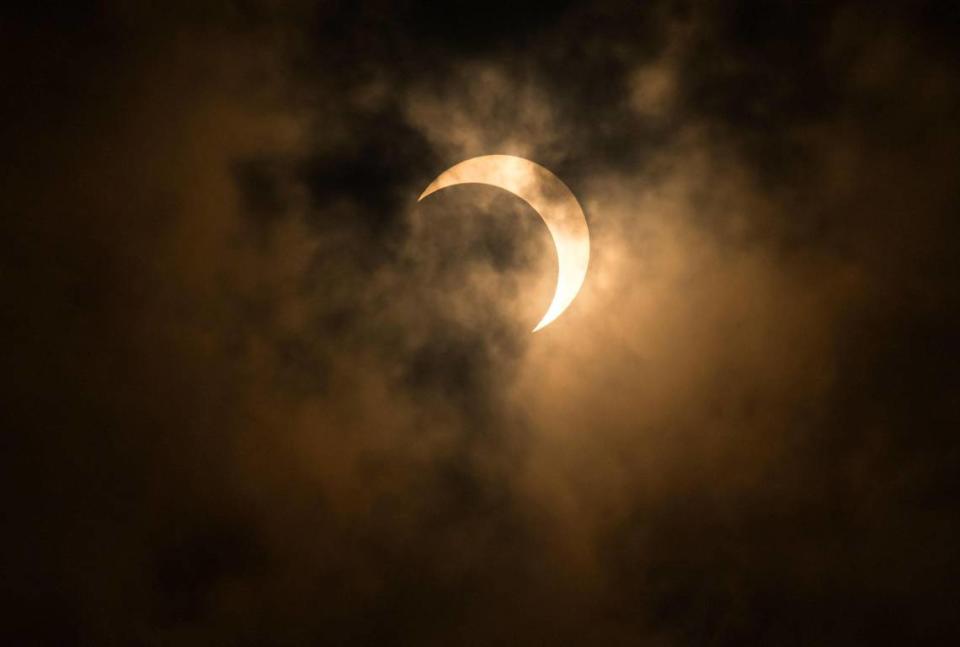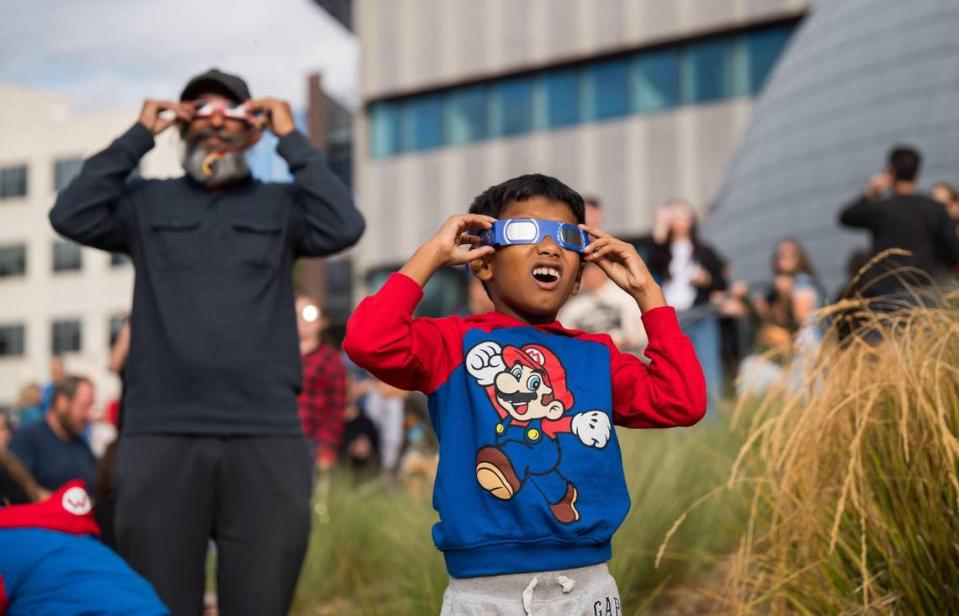How can I watch the solar eclipse in Sacramento safely? Viewing tips and events
A partial eclipse will overlook California on Monday, but don’t lay your eyes on the sun, yet.
For parts of the United States, Mexico and Canada, a total solar eclipse will grace the sky on Monday, starting at around 11 a.m., Pacific Time.
It’ll be traveling through Oklahoma, Arkansas, Missouri, Illinois, Kentucky, Indiana, Ohio, Pennsylvania, New York, Vermont, New Hampshire, and Maine, according to NASA.
However, California isn’t in the path of totality — when the moon completely covers the sun and an eclipse appears. Instead, cities in the Golden State will see a partial eclipse.
Unlike the other states where, during totality, you can view the sun briefly without protection, those with a partial eclipse need to be protected.
“(Sacramento) can only expect about 35% coverage of the sun, even at the peak,” said Kyle Watters, a professor of physics and astronomy at Sacramento State.
Maximum coverage, he said, begins at around 11:15 a.m. in the Sacramento area.
“This means that the sun will NEVER be safe to look at with your unprotected eyes,” Watters wrote in an email to The Sacramento Bee. “Eclipse glasses or an eclipse viewer are required AT ALL TIMES for us here in California.”
What time is the eclipse on Monday?
The eclipse starts at around 10:30 a.m. and lasts to noon, depending on where you are in California.
You can find the exact time when the partial eclipse begins and ends, and how much the sun is covered on the NASA website.

Eclipse viewing tips and safety
Those in California will need to keep their eyes protected for the partial eclipse.
“Before and after totality, the only safe way to look directly at the uneclipsed or partially eclipsed Sun is through special-purpose solar filters, such as ‘eclipse glasses’ or hand-held solar viewers,” the National Solar Observatory said on its website.
Avoid using homemade filters or regular sunglasses, the observatory said, even if they are very dark. These products are not safe for looking directly at the sun.
NASA advises that you should inspect your eclipse glasses or viewers before putting them to use. If they’re damaged, torn or scratched, toss them away.
Additionally, do not look at the sun through a camera lens, telescope or binocular while wearing eclipse glasses and viewers, the agency said.
“(T)he concentrated solar rays will burn through the filter and cause serious eye injury,” NASA said.

Where to get eclipse glasses
Genuine eclipse glasses must meet ISO 12312-2 international safety standards, according to the American Astronomical Society, and beware of fakes.
The society issued a news release in March, warning people of counterfeit and fake eclipse glasses in the market. It also provided a list of vendors that sell safe solar viewers.
If you can’t get your hands on eclipse-safe glasses, you can still experience the astronomical event.
Watters of Sacramento State said you can take a strainer with small holes or colander and hold it up to the sky to cast shadows during the eclipse.
“If you hold it right you should be able to see tiny images of the sun inside the shadow, and those images will have the characteristic ‘PacMan’ shape of the sun with a bite out of it due to the moon!” Watters said.
Sacramento eclipse events
The Davis Astronomy Club will be hosting a free viewing of the eclipse on Monday at Mace Ranch Park, 3141 Fifth Street in Davis, by the Explorit Science Center.
From 10 a.m. to 12:30 p.m. people of all ages can enjoy the eclipse, according to the club. There will be a limited number of safe solar viewers that guests can use.
SMUD’s MOSAC, 400 Jibboom St. in Sacramento, won’t be holding a big event but the museum will be providing approved eclipse glasses and telescopes Monday morning.
Know of an eclipse viewing event in Sacramento? Share with us below or at servicejournalist@sacbee.com.
What do you want to know about life in Sacramento? Ask our service journalism team your top-of-mind questions in the module below or email servicejournalists@sacbee.com.

